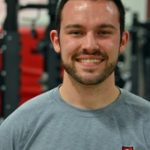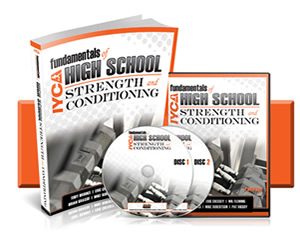Transitioning from one sport season to another is something many athletes deal with. Whether it’s a multi-sport athlete transitioning into a totally different sport or a single-sport athlete moving from club to school seasons, these periods can be both exciting and tricky. The transitions will vary greatly depending on the success the team/individual had during their season, so plans must be flexible.
As a strength and conditioning coach, if you work with a school’s full athletic program the number of multi-sport athletes that you encounter will greatly depend on the size of the school and number of sports offered. I am within a school of 400 students with 15 varsity sports to choose from, and a “no cut” policy. This creates an atmosphere with a wide variety of talent and a situation where coaches are constantly vying for the top talent. As these athletes make the quick transition from football to basketball or volleyball to soccer I must be there to make the transition easier. The athletic demands are all changing during this transition, from the movement needs, to strength demands, and conditioning requirements. Let’s also not forget finding time to recover from the physical and psychological stressors of the previous sport’s season.
With all of these things in mind, what do I focus on first? What is most important to address and what can wait a week or two? Throughout this article I will discuss the hierarchy of my concerns as well as how I address each of them with my athletes.
Mental State
One of the first areas that needs to be addressed is the athlete’s mental state. How did they finish the previous season? Was the season an overall positive experience? Athletes who come off of a negative season, whether it is due to interpersonal experiences, competition outcomes, or conflicts that arose within the team, can have a mental residue that can construe the beginning of the next season. It is important for the athletes to take a few days or even a week to debrief and reflect on what occurred throughout the previous season. As a coach, we have to give them this time needed and assist in any way that we can during this process. Sometimes it’s as easy as asking how they are doing.
Injuries
The next area to address is any injuries that may have occurred throughout the season, regardless of whether the injuries continue to linger. This is a great time to re-evaluate injury sites, assess movement quality within these areas as well as gross movements incorporating these sites. These movements can also be specific to the sport that the athlete is going into. If I have an athlete that is transitioning from football to indoor track and field I will spend a great deal of time evaluating the ankle and hip joint to assess range of motion, muscle activation, and movement efficiency- two assessments in link below.
Typically, these specific athletes are going to lack full hip extension, causing them to do a lot of extending in their lumbar spine throughout the first few weeks of the season. This is a time that I will keep them away from high velocity sprinting in order to work into complete Glute activation and hip extension so that we can prevent any potential injuries for occurring.
Movement & Strength
As a part of the specific injury assessment I also perform a gross movement quality assessment. This is similar to an abbreviated GPP (General Prepatory Phase) in regards to the movements used and program structure. This allows me to reintroduce planes of movement and exercises that the athlete may not have been in or used throughout the previous season. These general movements will be the bridge between the strength training from the previous sport and the upcoming sport. Through this process we are able to incorporate new planes of movement, new movement patterns, and different training speeds, where applicable.
Conditioning
The final piece is the conditioning side of training. Again, the focus is on meeting the athletes where they are at currently and helping to build them to the demands of the upcoming sport. Much of this can be done through sport specific practice sessions, however this may only target the conditioning toward the middle of the spectrum and not focus enough on conditioning at the ends of the spectrum. For example, when my football athletes transition to basketball much of the conditioning will be similar, however, this is a time to address base level aerobic conditioning as well as alactic conditioning while in change of direction and repeated sprint scenarios. If one or both of these areas are not being addressed within practice then we will take the time to address it within training once a week.
Throughout this transition process the theme is to meet the athlete at their current position and help them through the transition. As opposed to throwing them into practice with the athletes who have been there for 10 weeks, and hoping for the best. This transition will set them up for the rest of their season.
 About the Author: Nick Brattain is the owner of Brattain Sports Performance in New Orleans, LA. Throughout his career as a track athlete at the University of Indianapolis, he accumulated 3 NCAA All-American titles, 6 GLVC Indoor/Outdoor Titles, and numerous indoor and outdoor records. From 2011 to 2014, Nick worked for a private, hospital-based facility in Indianapolis, where he grew exponentially as a coach due to the high caliber of colleagues around him and the opportunities he received to work with some of Indy’s most elite athletes. In 2014, Nick moved to New Orleans where he began Brattain Sports Performance. He is currently working with some of the top NBA and WNBA talent in the league. He also continues to work with high school and colleges athletes of all sports as they aspire to reach the professional levels.
About the Author: Nick Brattain is the owner of Brattain Sports Performance in New Orleans, LA. Throughout his career as a track athlete at the University of Indianapolis, he accumulated 3 NCAA All-American titles, 6 GLVC Indoor/Outdoor Titles, and numerous indoor and outdoor records. From 2011 to 2014, Nick worked for a private, hospital-based facility in Indianapolis, where he grew exponentially as a coach due to the high caliber of colleagues around him and the opportunities he received to work with some of Indy’s most elite athletes. In 2014, Nick moved to New Orleans where he began Brattain Sports Performance. He is currently working with some of the top NBA and WNBA talent in the league. He also continues to work with high school and colleges athletes of all sports as they aspire to reach the professional levels.
For more information on how to train high school athletes, check out the IYCA High School Strength and Conditioning Specialist course and certification. The HSSCS is the only certification available that focuses entirely on training high school ages athletes. The HSSCS includes several hours of video instruction and two textbooks with contributions from 20 of the top strength & conditioning coaches from major universities, high schools, private facilities and NFL teams. Click on the image below to learn more about the High School Strength & Conditioning Specialist credential.


